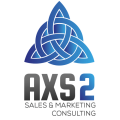
The difference between success and failure of your website often lies in its design. How a site is laid out, what colors, fonts and images you use (or don’t use) can spell high conversion and low bounce/exit rates as well as low sales.
You can make use of the following tips to ensure that people stay longer on your website leading to more clicks and transactions.
1.Intuitive Navigation
A confusing site layout will likely result in people giving up rather than making an effort to figure it out. Put your call to action in the upper portion of your website, along with your contact details. This way, instead of cluttering your homepage with links to less important pages you can have your primary information at the top.
Primary navigation options can be deployed in a horizontal [menu] bar at the top of the pages. Secondary navigation options can be underneath this primary navigation bar, or in the sidebar (usually in the left-hand margin.)
2.Make good use of your Logo
Your logo is the most prominent part of your brand. Invest in a polished, professional logo–a high-resolution image and position it in the top left corner of each of your pages. It’s advisable to link your logo to your home page so that navigation becomes easy for visitors.
3.Every page should be a landing page.
“Most websites assume that users enter via the home page and then further navigate inwards. However, a majority of visits begin on a page that is not the home page and therefore, you need to design the site in such a way that a visitor has access to key information, no matter which page he lands on.
4.Less is More
Our brains eventually give up processing information when visually overloaded with content. To retain your visitors’ attention, pages should avoid too many calls to action or visual clutter [graphics, images, animated gifs etc.] These would only draw the visitor’s attention away from the most important part of the page.
With a lot of visual competition in the digital space, less is definitely more. Also, streamline your content. Keep paragraphs short with not more than five to six lines.
5.Use color wisely.
Neutral color palettes help project an elegant, clean and modern appearance. Small dashes of color—in key graphics or headings–help guide visitors to your most important content.
It is important that the color palette complements your logo and is consistent with other promotional media.
Effective use of white space throughout the layout can help keep focus on the content and guide users. Enough space between your paragraphs and images helps users digest more of the features of your site, and business has on offer.
6.Ensure multi-device compatibility
Keep in mind that people will be using multiple devices to look at your website – Laptops, Mobiles, Tablets, etc. Rather than developing different layouts for devices, use a responsive design that automatically adapts to the browser size.
Also choose your fonts wisely. Large-scaled fonts that may look good on a bigger screen might not scale or render well on smaller devices. A universal font is recommended and if using Web fonts, try to use no more than two font families in order to ensure fast load times.
7.Improve and optimize your design.
Website optimization can have a significant impact be it testing different shades of a color, or the placement of a call to action. User testing, A/B testing or even a simple survey can help you continuously improve designs by gathering feedback from real people.
Startups that are Taking Social Media by Storm
